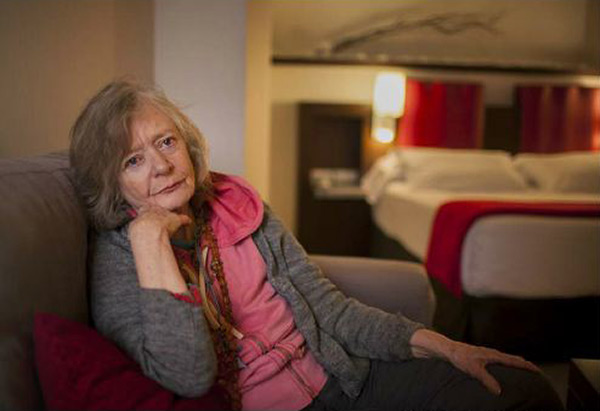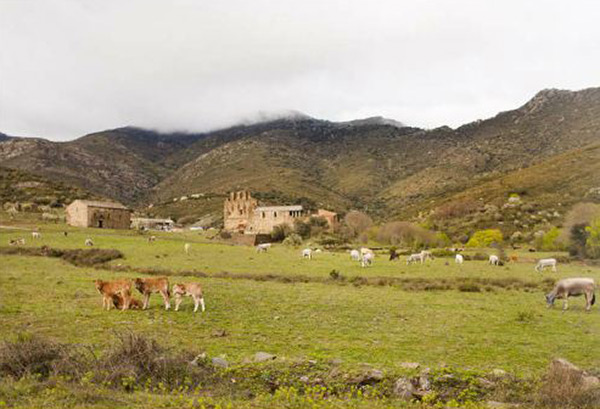The following is an extract from an article and interview with Patrice that appeared recently in [ut] Essencial Empordà Guia, a bi-lingual magazine published in Catalunia:
Incipient spring light breaks through the clouds in an April full of rain. The road winds its way through the hills of Albera, until the gravel on the wheels signals the vehicle’s intrusion into foreign territory; a world where old buds are renewed of that sense of life we all should hold most sacred. The noise of the engine disrupts a harmony that should never be broken. The walls of the monastery of Sant Quirze de Colera rise up in the middle of the small valley like an offering to the universe.
Darkness had fallen when we passed the door of the church. A Gregorian chant between lit candles, an unusual calm in a world so busy we rarely have time to remember that we also contain a spirit element. In this circle of smiling faces there is an English lady, Patrice Chaplin. Her latest book speaks of Rabós d’Empordà, Santa Julita and Sant Quirze, and one wonders what a woman with this name and origin is doing in a small valley in the Empordà’s Pyrenees.
How did you choose Girona?
“Oh, I did not choose it at all! But perhaps Girona chose me, who knows…”
Patrice arrived in Gerona as the sun was setting. The Eiffel Bridge stretched before her, connecting both banks of the river, and Patrice knew that if she crossed it she would never be the same. A young man, Jose Tarres, a local poet, hands in his pockets, waited at the other end. As she entered into the city she was greeted by its history, its people, its environment and intense feeling of love. She was fifteen. She was lodging at the Auberge de la jeunesse but she would wander the streets with the friends of Jose Tarres, and used to visit his family. With them, she went to Rabós d’Empordà. The Benedictine monastery of Sant Quirze was abandoned but sometimes she felt Gregorian chants rising above the walls. Some people, members of a society with an interest in knowledge of the world beyond the country’s obtuse view, so characteristic during the fifties, gathered within those ruins straddling Spain and France, with the intention of going beyond the limits of knowledge.
“It was at that time that I met John Cocteau. He was filming scenes for the film Le Jardin de les Françaises in Girona. Later, when I got married, we saw each other many times because he was a friend of my father-in-law, Charlie Chaplin, and Jean insisted that Girona was a vortex of universal energy.”
“Salvador Dali used to say that this is an area of extraordinary energy content. One day, Michael, my husband, said that Dali considered the station in Perpignan as the centre of the world because he didn’t rely on the Spanish postal service and used to send his paintings from there; however, Dali himself denied it categorically and claimed that Perpignan is the centre of a triangle full of mystical elements and magnetic mysteries.”
Some of Patrice Chaplin’s recent books talk about this, such as The Portal, City of Secrets, or Jeanne Hébuterne and Modigliani – Un Armor Trágico (A Tragic Love). Soon to published is The Stone Cradle, a non-fiction story located around Rabós and in which the author makes it clear that Empordà holds a privileged place in nature.
“Rocks, trees, wind … these are things which do not belong to the human race. People have a great capacity for destruction; it may be why the characteristics of these sites are kept as secrets.” She thinks. “I’m just an intruder in an exquisite place.”




